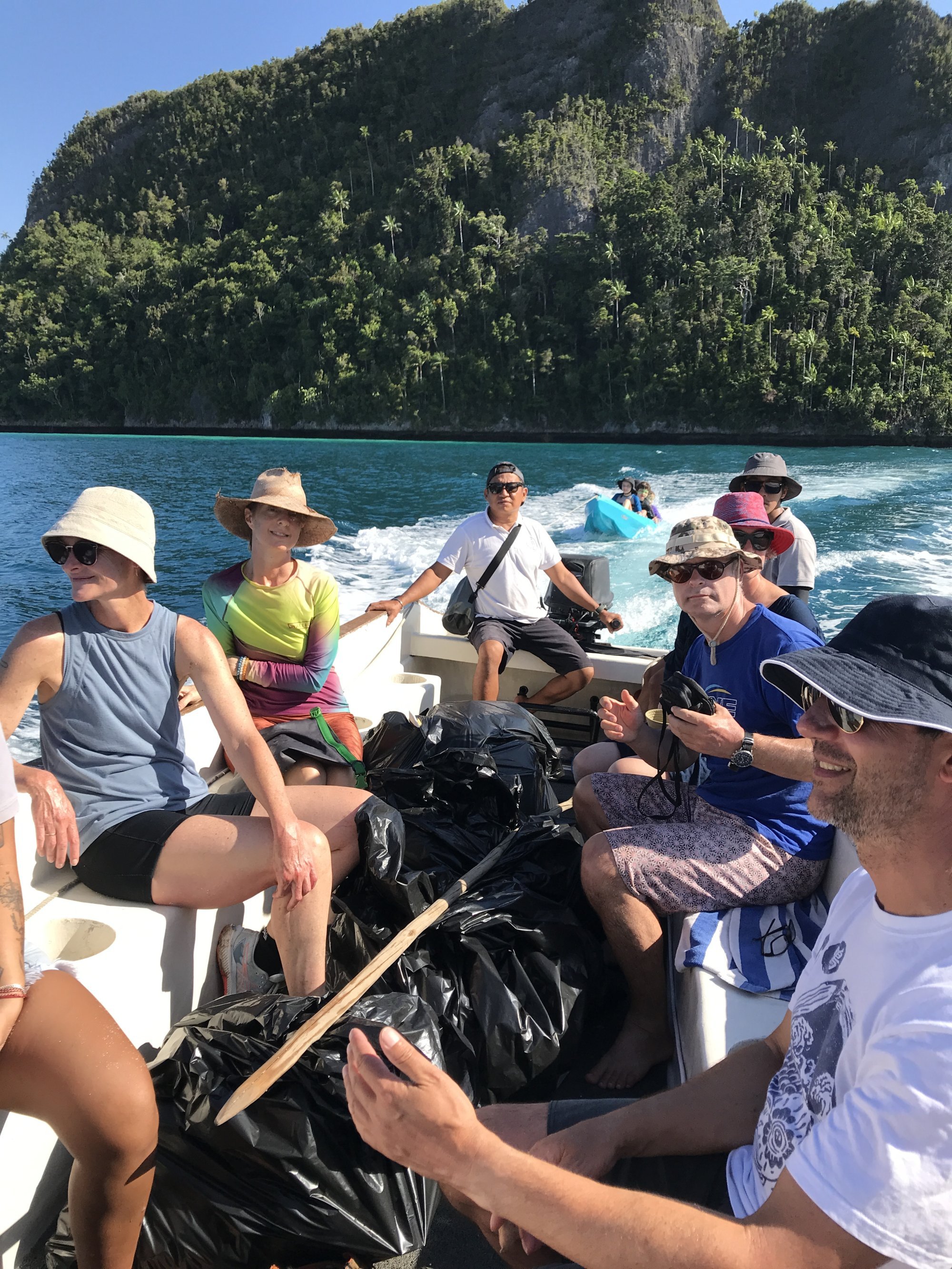Sailing Indonesia’s Raja Ampat archipelago: a place that deserves to be called paradise (especially after a good beach clean-up)
Raja Ampat comprises some 1,500 coral-fringed islands in crystal-clear waters in Indonesia’s West Papua province
The area is stunning, with natural beauty, huge biodiversity, and the best way to visit is by liveaboard boat
Blue Lagoon beach view in Indonesia’s Raja Ampat archipelago
Descriptions such as breathtaking, picture-postcard, earthly paradise and awe-inspiring are so overused in travel writing, they are almost meaningless. In truth, they should be saved for places like Raja Ampat, an archipelago of some 1,500 turquoise-rimmed islands scattered throughout the crystal clear waters of Indonesia’s far-flung West Papua.
One of the world’s last remaining tropical paradises, its jungle-filled islands, coral-fringed cays and coconut freckled beaches are the stuff of movies and magazine covers.
The marine biodiversity is equally unmatched. The region’s converging tropical currents and volcanic geological activity have resulted in habitat growth that supports myriad sea creatures including close to 1,700 species of reef fish, 700 species of molluscs and 600 species of hard coral.
I’m exploring this incredible place like most visitors do, on a liveaboard sailing boat, Captain Jack Sparrow-style. The 12-berth, 32-metre Nataraja is a traditional phinisi sailing boat, hand-built from ironwood by Buginese craftsmen on the Indonesian island of Sulawesi.
Traditional phinisi sailing boats are the vessels of choice to sail Raja Ampat in West Papua, Indonesia
Its sails are for show, nowadays, as are those on most of the phinisi that are retrofitted for leisure, but its two masts and timber-planked hull – pointed at the bowsprit and squared off at the stern – cut a fine figure navigating through the archipelago’s 70,000 sq km.
Each day brings an immersion in the big blue. Whether snorkelling, scuba diving or kayaking, the water wonderland is phenomenal.
As we float around the pylons of a village pier, huge schools of fish shape-shift in a kaleidoscope of patterns around us in wondrous synchronicity. Mangrove explorations reveal gardens of hard and soft coral just below the surface of the water, a combination of ecosystems rarely seen elsewhere.
On the sandy bottom, manta rays dance over the top of us like bedsheets in the wind. Few destinations can boast the fantasia of marine creatures we set eyes on in the course of a week – wobbegong sharks, dolphins, dugongs among them.
An eight-hour overnight cruise takes us over the equator (the captain sounds the horn in celebration) to Blue Lagoon, in the less accessible north of Raja Ampat. The smattering of islands here have a ring of luminescent turquoise at their base topped with dramatic volcanic rock peaks. They look like giant cupcakes floating in a sea of blue jelly.
Hilltop views of Blue Lagoon and the Nataraja
After the Nataraja puts down anchor, three of us jump in a kayak to explore barnacled island overhangs worn away by tidal waves. The water is so clear we can see a white sandy bottom pockmarked with crab holes and it is glaringly bright in the midday sun.
When a thin line of sand emerges on an island in the distance, we paddle hard towards a little cove about 50 metres long, bookmarked on each side by rocks, and fringed by green water. As we flop on the beach, towering big-leafed tropical trees drop exotic unrecognised flowers onto the sand around us.
“Pristine” is another word that gets bandied around when writers need to extol a destination’s natural virtues. It would be tempting to employ it in relation to this new-found beach had not the tide brought plastic with it.
Strung along the shore amid peach-coloured shells and smooth white driftwood is the usual detritus: drink bottles, straws, petrol containers, single-use cups, fishing nets, even toothbrushes. The rubbish is buried in the sand and caught in the trees, and is part of the scenery.
The jungle presses up to the water’s edge at Blue Lagoon, in the north of Raja Ampat
Like survivors of a shipwreck we get to work picking up as much as will fit in the netting at the end of our kayak, our catch of the day.
Later, we return to the beach in a tender with the Nataraja crew and guests to show off our paradise and to clean it properly. It takes 18 of us about half an hour to collect four large bags of rubbish.
Marvella, the Nataraja cruise director, acknowledges the problem and is enthused by our clean-up. The cruise operator has considered beach clean ups as an optional activity for guests, she says, but there are challenges. The main one is that all rubbish must go back to Sorong, West Papua’s largest city. Any beach rubbish collected needs to be stored on board for the duration of the trip and space is tight.
After the beach clean up at Blue Lagoon
We sit on the sand sipping on sundowners, feeling somehow more deserving of the privilege of being on one of the world’s most beautiful beaches, sun on our faces, a good deed done.
The next day we climb the steep rocky slopes to a viewpoint on another island. From these heady heights I can see the Nataraja at anchor amid a breathtaking blue-green sea of islands receding into a far-off horizon. This is picture-postcard stuff, an earthly paradise. What makes it especially awe-inspiring is the small part we played in keeping it pristine.




